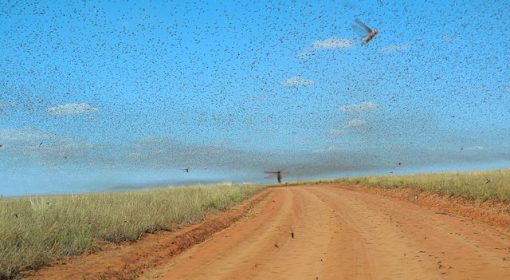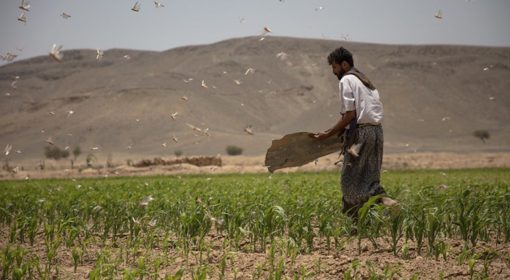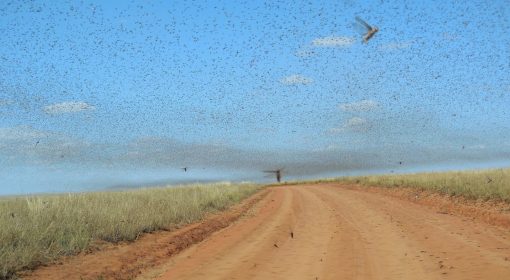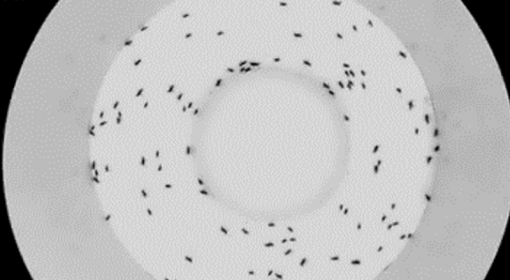In January 2020, the Pakistan Ministry of National Food Security was faced with a new challenge. Swarms of locusts had devoured millions of acres of crops in the fertile region of Punjab. In order to tackle the issue, they had to come up with a solution that could be less harmful than spraying fertilisers. An out-of-the-box idea was found which was a modification of an already existing model from Yemen.
The Yemen Model
Mohammad Khurshid, a senior officer in the Pakistan Ministry of National Food Security, modified the existing Yemen model and adapted it to Pakistan. The new solution relied on help from the community at the village level in catching locusts.
In February 2020, the Phrase, ‘Catch Locusts, Earn Money and Save Your Crops,’ became the Mantra for the fight against Locusts in Pakistan.
The Government mobilised the local community in its fight in catching locusts. The plan focussed on capacity building of the community members and training them to catch locusts where they were causing havoc.
According to Mohammad Khurshid, ‘a family earned Rs. 20,000 by collecting locusts. It helped the family earn income and motivated other community members to join in collecting locusts’.
The community members were given sacks to catch the locusts. As locusts generally eat during the day, the people were advised to catch them during night time when they rest on trees. Every kg of locusts collected would fetch villagers Rs.20 (USD 0.50). Farmers were known to earn as much as USD 125 for a night’s work.
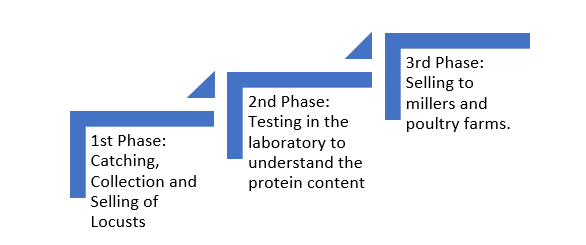
After catching the locust, the next step was to understand the nutritional content in the locusts for further processing. It was found that the protein content in locusts were higher than the generally used sources like soy bean and fish.
The presence of high content of protein indicated a new ray of hope and paved a way for a new market mechanism model which involved value addition to the catch. The locusts that were caught were collected and sent to poultry feed millers who turned them into feed for chicken. A market mechanism was established where the local people would sell the locusts to the feed millers, the feed millers would convert them into powder containing high amounts of protein, and later sell the protein powder to poultry mills.
Adopting this kind of mechanism is beneficial for the community and the economy. It relies on the idea of ‘using locusts rather than throwing them away’. The Pakistan Agricultural Research Council (PARC) have taken up this idea and the Government of Pakistan has decided to replicate the model using community strengthening in other areas as well. A $200 Million project is also in the pipeline that promotes field implementation of the existing model at a larger scale.
One of the project aims to make fertilisers out of locusts. This would boost agricultural production as locusts are rich in protein and other nutritional content. The idea is to use such fertilisers in desert areas where the agricultural productivity is low; so as to create a win-win situation.
Way Forward
The model has potential to be replicated at a larger scale in other countries as well. However, there needs to be more focus on the research and development as well as capacity and resource mobilisation so that a sustainable and circular economy be created based on community participation and strengthening of value chains.
